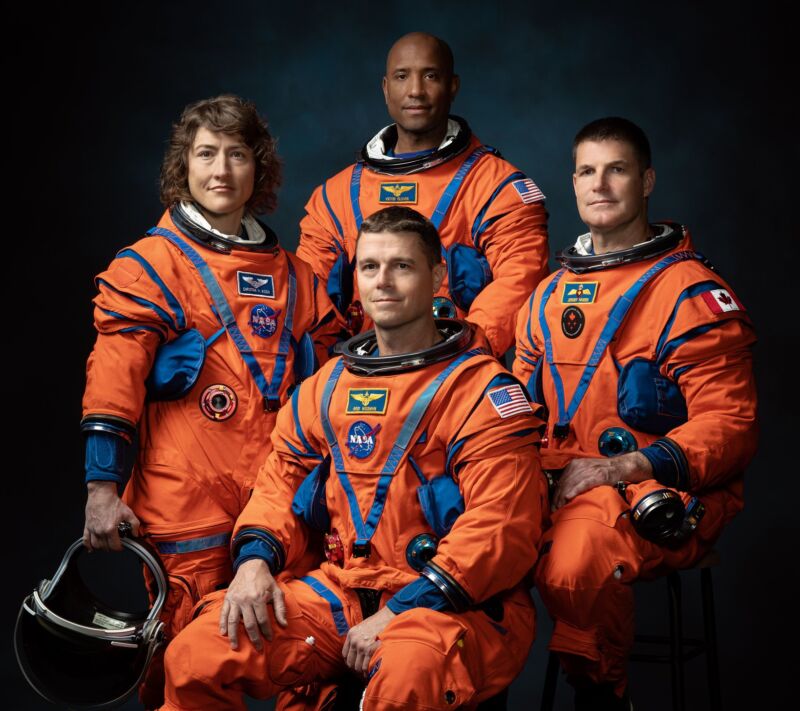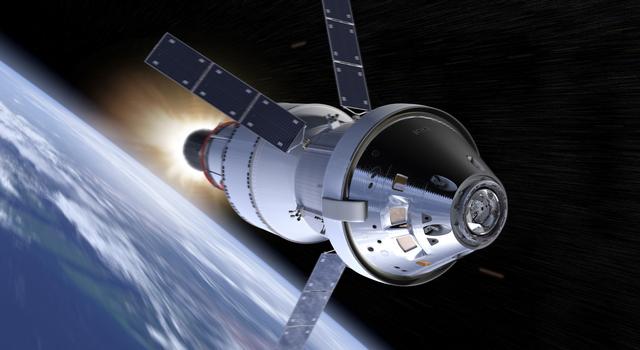
NASA on Monday staged the kind of celebratory event it has wanted to hold for five decades—the naming a new crew to fly to the Moon.
The Artemis II mission will fly four astronauts around the Moon during an approximately week-long flight. This will be the first time that humans have left low-Earth orbit since December 1972, at the conclusion of the Apollo 17 mission.
"It's been more than a half-century since astronauts journeyed to the Moon," NASA administrator Bill Nelson said Monday. "That's about to change."
Nelson then announced the crew of the Artemis II: Commander Reid Wiseman, a naval aviator and experienced astronaut; Pilot Victor Glover, a test pilot who flew on the first operational Crew Dragon flight; Mission Specialist Christina Hammock Koch, an engineer who holds the record for longest duration spaceflight by a woman; and Mission Specialist Jeremy Hansen, a Canadian physicist who will be the first non-American to fly into deep space.
NASA held the crew announcement inside a large, packed hangar at Ellington Airport in South Houston. It was a raucous, joyous event for the spaceflight community in Houston, which suffered through a difficult period after the retirement of the space shuttle in 2011.
The Apollo astronauts lived and trained here. The Apollo missions were flown from here. And even during the three decades of space shuttle missions, there was a regular cadence of flights to prepare for and astronauts to train. But for most of the last 12 years—until SpaceX began flying Crew Dragon—NASA astronauts have often spent as much time training in Russia as in Houston because they launched into space on Russian rockets.
NASA is back
But NASA is back, in a big way. As part of Monday's announcement, most of the agency's several dozen astronauts paraded on stage. Many had come to NASA in hopes of, one day, flying back to the Moon. The International Space Station is great, but these men and women were explorers at heart. They wanted to boldly go, and that meant going beyond low-Earth orbit. Now, they are starting to go.
"This is a big day," said Glover, the mission's pilot. "We have a lot to celebrate. Humanity has a lot to celebrate. Artemis II is more than a mission to the Moon and back. It is the next step on the journey that gets humanity to Mars. This crew will never forget that."
NASA completed the Artemis I test flight of its Space Launch System rocket and Orion spacecraft late last year, a precursor flight to putting humans on those vehicles. With Artemis II, the crew of four will launch on the SLS rocket and spend about 24 hours in an elliptical orbit around Earth before Orion fires its engines to place the spacecraft in a "free return trajectory" around the Moon. This means that once Orion burns its engines, it is committed to flying around the Moon, within about 6,000 miles of its surface, before looping back to Earth.
Artemis II could take flight as soon as late 2024 but is more likely will do so during the first half of 2025. Success on this flight will set the stage for Artemis III, which will land two astronauts on the surface of the Moon. Eventually, NASA aims to fly a regular cadence of missions to the Moon starting in the late 2020s, learning to live and work in deep space before ultimately—as Glover stated—attempting a human landing on Mars.
Mars remains far away, with only notional schedules and unfunded budgets. But now, the Artemis II mission is unquestionably happening. The naming of an actual crew, with all of its attendant pomp and circumstance, puts this flight on an inexorable path toward liftoff. For example, now flight suits can be tailored for each astronaut, and they will begin an intense 18-month training period for the mission profile.
This is a crew with many firsts. Koch will be the first woman to fly into deep space. Glover is the first minority. And Hansen is the first person from outside the United States.
Moving on from Apollo
There are several meaningful ways in which the Artemis Program is different from its predecessor. Artemis seeks to go to the Moon with a sense of permanence rather than flying a half-dozen sorties down to the lunar surface. The new program is also partly powered by a commercial space industry that did not exist until recently.
But perhaps the most significant way Artemis differs from Apollo comes through its international outreach to other nations. More than two dozen countries have signed "accords" to join the Artemis Program. The lunar initiative builds on partnerships developed by NASA and the US government to fly the International Space Station.
This approach engenders international goodwill, and the strong international ties also help ensure that NASA programs are less susceptible to cancellation by new presidents or Congresses.
"There is no way you go to 250,000 miles from the Earth and look back at it and go man, I wish we'd have gone alone," Wiseman, the crew commander, said in an interview. "No, you look back and go, 'I am so glad we are doing this internationally.' Jeremy's on this. We're gonna have Europeans, Japanese astronauts, and hopefully someone from the UAE down the road. I really hope this is just the beginning."



3175x175(CURRENT).thumb.jpg.b05acc060982b36f5891ba728e6d953c.jpg)
Recommended Comments
There are no comments to display.
Join the conversation
You can post now and register later. If you have an account, sign in now to post with your account.
Note: Your post will require moderator approval before it will be visible.